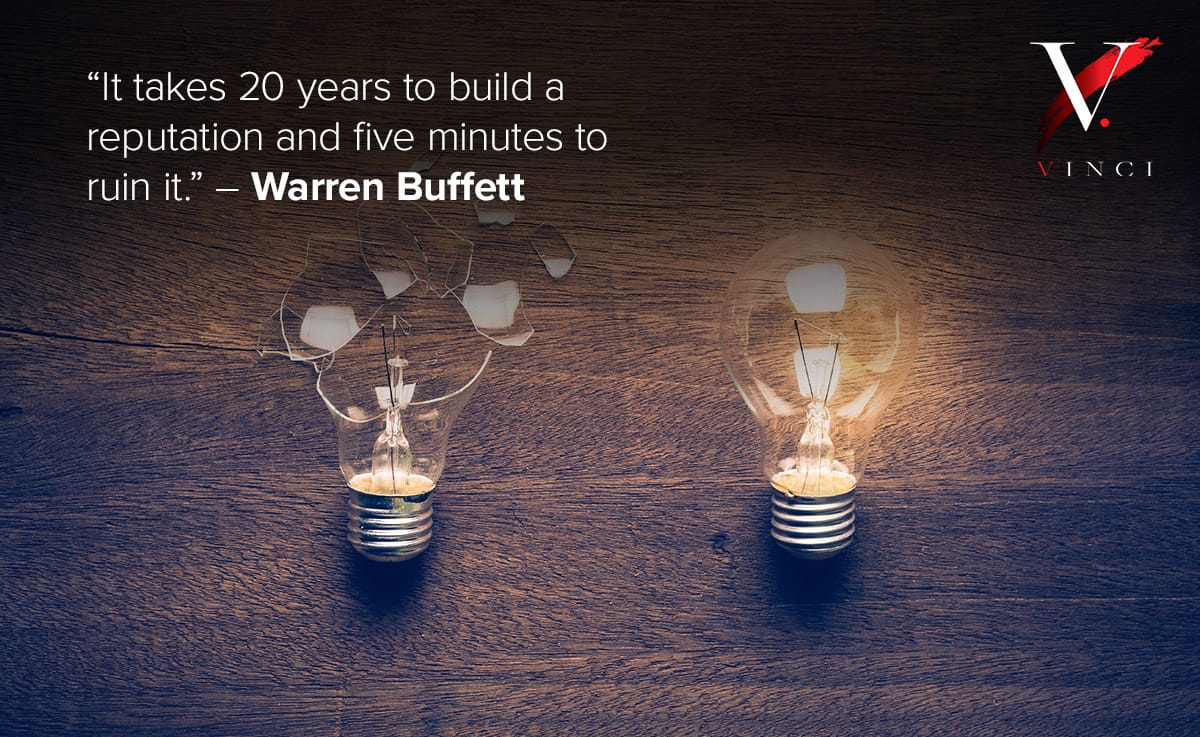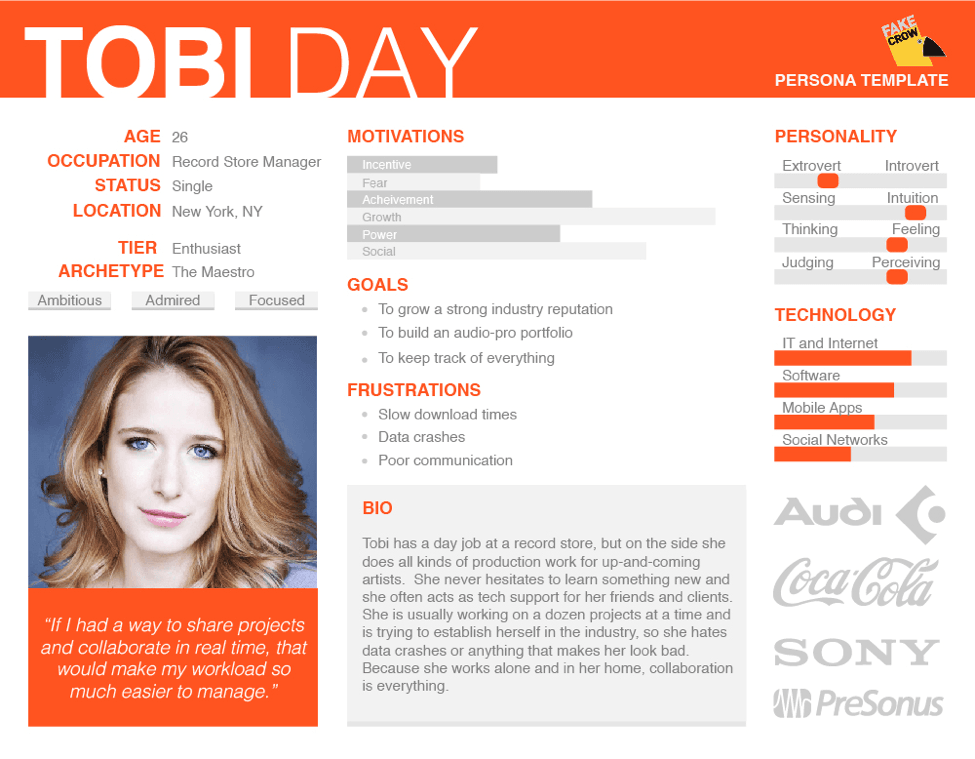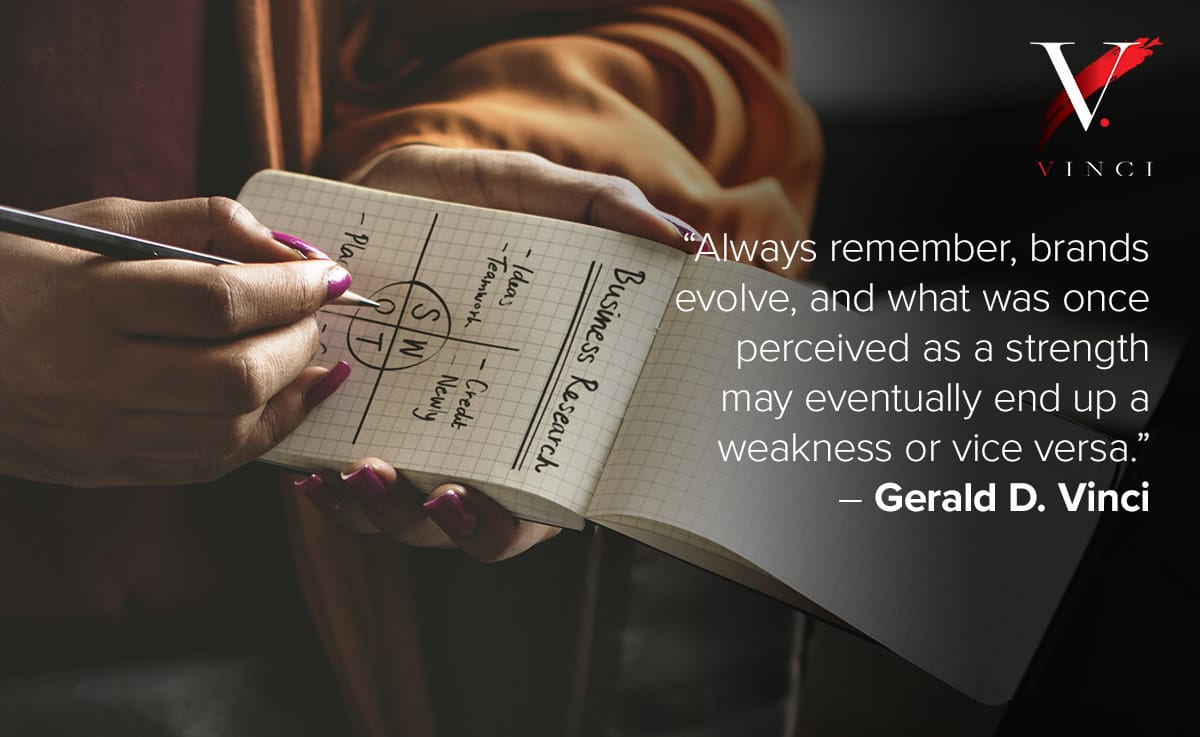Business Branding Basics
Few modern marketing concepts hold more allure than that of the business brand. Of course, this idea is far from new, but it has become a clear priority for organizations of all sizes and across virtually every sector in recent years.
Take a quick look at the stats, and it’s easy to see why the idea of a strong brand is so compelling. First, it helps you stand out. Second, brand strength is critical if you’re struggling to gain a foothold in a competitive market. Third, the ROI of brand awareness can be challenging to discern, but a study from Red C shows that 82 percent of search engine users opt for a familiar brand when making that essential first click.

Once you’ve done the hard work of attracting new customers, effective branding helps you make the most of every consumer. The positive benefits of branding are clear. In a survey from Facebook IQ, 77 percent of respondents claimed to “[return] to the same brands again and again.” While some of these individuals made repeat purchases out of convenience, a significant percentage did so primarily because they felt loyal to their favorite brands.
Ask any of your existing customers, and you’ll discover that you already have a brand. However, suppose you’re not actively shaping that brand. In that case, you may be inadvertently allowing customers to shape the brand for you and miss out on a real opportunity to enhance your marketing campaign, improve awareness, as well as build trust and customer loyalty.
Before your brand-building strategy can succeed, you need to understand what, exactly, branding is. To help, we’ll define this essential concept below. After reading this guide, you’ll also understand why business branding is essential — and what it takes to build and maintain an effective brand.
What Is Branding?

Before we talk about branding, let’s first answer the question, “What is a brand?”
Marketing expert and former business executive Seth Godin provides an excellent definition of this concept:
“A brand is the set of expectations, memories, stories, and relationships that, taken together, account for a consumer’s decision to choose one product or service over another.”
A successful brand evokes recognizable emotions that lead to positive outcomes for the business in question. In other words, it all boils down to perception.
As Godin explains, a brand cannot be limited to any singular experience or idea. Instead, it sums up a range of considerations that influence consumers and shape public perception—because of this, developing a business brand can be confusing and complex.
A variety of misconceptions surround branding — and these can keep business owners (especially small businesses) from committing to the soul-searching process at the heart of successful branding.
Your Brand is Not Just a Logo!

Often when I talk about branding, people tend to assume I’m referring to a logo. For example, we all know the iconic Nike swoosh or the McDonald’s golden arches. While these may be effective tools for building brand awareness and recognition, the logos do not form the essence of a brand all on their own. Instead, the authentic brand lies beneath the surface, representing the deeper goals and values that drive a business’s public persona and internal culture.
Nike has positioned their brand as the representative of a progressive and diverse community of movement-oriented individuals, which places the company’s branding strategy a step ahead of its competitors. By evoking motion, the swoosh fits in perfectly with Nike’s overarching mission. The logo supports the brand, not the other way around.
The McDonald’s brand is even more intriguing, for, while the golden arches have long been a powerful driver of brand recognition, the company has shifted its approach on numerous occasions. It began as the revolutionary force behind fast food, eventually transitioning to budget-oriented cuisine for the common folk and, more recently, settling into a new niche: simple, joyful energy that translates to cheerful service and basic yet enjoyable menu items.
A brand may also evoke negative emotions. Again, if we stick with McDonald’s for demonstration purposes, they have been criticized for the lack of healthy menu options, supersized value meals, and poor quality of beef and chicken. A brand can work for you or against you.
So, with all that in mind, how can we accurately define the concept of a brand? This broad term allows various ideas, events, and circumstances to come together and determine how we feel about a particular business.
Nike may eventually retire the swoosh, and McDonald’s may say goodbye to the golden arches, but that doesn’t change who they are and what they might stand for.
How Branding is Both Simple and Complex

Branding can be challenging to define, in part, because the concept is simultaneously complex and straightforward. This dichotomy makes branding uniquely tricky to understand, but it also delivers unique opportunities to businesses that succeed in defining and promoting their unique selling position in the market.
Simple
At its most basic level, branding helps one business differentiate itself from another. In this context, an effective brand demonstrates why a particular company stands out among its competitors. Thus, established brands will inherently be recognized and well known for their logo (visual identity) and deliver a set of customer expectations.
Returning to McDonald’s, the efficacy of a solid brand is quite clear: there is never any question as to what the golden arches represent — or what type of experience customers will receive when they set foot in one of the chain’s many locations.
Complex
Diving a bit deeper, a brand represents the “why” behind your organization. Unfortunately, in many cases, this question can be difficult to answer or unknown. After all, even the most straightforward, clear-cut business still holds nuance, and trying to see what makes your business unique or subtly different than others is not always that easy.
These subtle differences are certainly the case for brands like Trader Joe’s, which, despite seeming little more than quirky based on product packaging and website design, is serious about sustainability and fair employee treatment.
Another source of complication? The drive to use brands to tell a story. Captivating narratives are important, but boiling down years of successes, challenges, and experiences with utmost authenticity can feel downright impossible. Accomplish this, and your brand will quickly attract both attention and respect.
Just like Henry Ford said, “You can’t build a reputation on what you are going to do.”
Therefore, an organization must utilize all available assets, experience, and feedback (good or bad) to build a solid foundation for its brand.
Brand Positioning vs. Brand Identity

There are many facets to branding, including two core concepts often confused: brand positioning and brand identity. These terms reference different but equally important aspects of your brand and the process of developing it. You’ll want to consider both as you create goals for your brand and take actionable steps to build and adjust it over time.
Brand Identity
What does your brand represent in the eyes of your target consumers?
Marketing expert David Aaker refers to this as the “core identity,” or the “central, timeless essence of [your] brand.” Ideally, this will hold constant even as your business expands to different products, services, or markets.
 One of the best examples of a consistently strong brand identity is Burt’s Bees. Even if you’ve never purchased lip balm or skincare products from Burt’s Bees, adjectives such as ‘natural’ and ‘simple’ may still come to mind. These qualities have long been the centerpiece of everything from the company’s logo to its Facebook page. The company’s products and structure have changed significantly over the years — and it’s even become a subsidiary of Clorox. Despite all this, the Burt’s Bees brand remains as identifiable as ever.
One of the best examples of a consistently strong brand identity is Burt’s Bees. Even if you’ve never purchased lip balm or skincare products from Burt’s Bees, adjectives such as ‘natural’ and ‘simple’ may still come to mind. These qualities have long been the centerpiece of everything from the company’s logo to its Facebook page. The company’s products and structure have changed significantly over the years — and it’s even become a subsidiary of Clorox. Despite all this, the Burt’s Bees brand remains as identifiable as ever.
Brand identity carries the heavy burden outside of any brand position or message to encompass how your organization wants to be perceived by others (internal). Identity should not be misconstrued with your brand “image,” which is how others perceive the brand (external). Therefore, a successful brand identity hinges on how your brand wants to be seen and what others think, feel, and experience.
Brand Positioning
Brand positioning is, by nature, reflective of competitors or other influential organizations in the same space. Your brand positioning is meant to either help establish a clear, differentiating message in the marketplace (to stand out) or align your organization’s vision with similar brands. How well a brand differentiates its message will determine how visible or unique it is perceived. Differentiation is essential, as no one business can be all things to all people.
The goal of brand positioning, outside of differentiating a business from competitors, is to get crystal clear on some key strengths and assets such as:
- What services do you offer?
- Why did you start this business?
- What markets do you serve?
- How do you help these markets, and why them?
When establishing a solid brand position, key decision-makers can seamlessly share the same vision, goals, and outcomes, positively affecting growth and long-term sustainability.

IKEA provides a stellar example of brand positioning. Everybody knows precisely where this low-cost furniture and decor supplier stands compared to other retailers that offer similar products. Customers know what will be expected of them as they navigate vast stores and already have the expectation they’ll be setting up furniture on their own. Customers are willing to put up with the extra effort in exchange for transparent pricing, consumer autonomy, and functionality that takes budgetary and space limitations into account. IKEA’s identity would be influential in and of itself, but it’s even more noteworthy when compared and contrasted against other retailers.
How Your Communications Strategy Helps With Both

Brand positioning and identity are not either-or considerations. Both are important to your brand’s success — and you can improve both with the right communications strategy. Honing your strategy and messaging will bring your brand to life as you share an inspiring message that gets your audience talking.
An effective communications strategy begins with awareness. Everybody involved with your brand — including stakeholders, employees, and influencers — should understand your core philosophy and goals for interacting with consumers. They should also recognize which types of messaging convey your brand’s ideals — and which words, phrases, or concepts to avoid. The sooner everybody is on the same page, the better. Creating a brand messaging strategy or “playbook” will help establish guidelines and maintain consistency in communication.
In addition to improving consistency with brand positioning and identity efforts, the ideal communications strategy will create a strong internal culture. Effective branding begins at the heart of your organization. A robust culture of connection could make all the difference as you share your brand’s unique message.
Why Business Branding Matters

Your brand is your organization’s most valuable asset. It has the power to determine, in a matter of seconds, whether a lead converts. Likewise, it can convince an ordinary client or customer to become a passionate brand advocate.
On the flip side, your brand has the power to tank your business. You can bounce back from a variety of setbacks, but even modest damage to your brand could lead to devastating losses. Gawker forms a cautionary tale, for, after years of dominating online media, the empire could not recover from a sex tape scandal involving Hulk Hogan.
Even successful companies like Amazon have seen what poor planning and brand strategy will do to their bottom line. In June of 2014, Amazon launched the Fire Phone, their first deep dive into the smartphone market. Riding on the coattails of the success of Kindle Fire and the brand in general, Amazon miscalculated their approach and brought their phone to market years after iPhone and Android models were already dominating the scene. In addition, they priced their product based on the industry standard even though the functionality and technology were not on par with competitors. Amazon also failed to make the phone available to consumers in the same ways they typically purchase smartphones and other electronics. By August of 2015, Amazon discontinued the Fire Phone and racked up over $170 million in losses.
Warren Buffett said it best, “It takes 20 years to build a reputation and five minutes to ruin it. If you think about that, you’ll do things differently.”
Below, we highlight both the positive and negative implications of business branding:
Brand Awareness

The value of branding is evident throughout every portion of the marketing and sales funnel. At the top of the funnel (where most consumers first engage with a business), brand awareness can lend your company a valuable edge. Consumers are far more inclined to place their trust in a brand that feels familiar, even when they don’t know much about the business in question—familiarity and confidence in a brand tie back to the “nuance” we mentioned earlier. Subtle differences in how a company positions itself in both visuals and message can subconsciously influence viewers to take action, good or bad.
Further down the sales funnel, branding influences your company’s perceived level of authority. Brand recognition is essential, for when all else is even, prospects will lean towards the business they regard as an industry leader. Some easy examples would be Coca-Cola vs. Pepsi, McDonald’s vs. Burger King, or Canon vs. Nikon, Nike vs. Reebok, and so on.
With brand-inspired authority status comes the perception of greater value in what you offer versus a competitor. While a competitor may have a superior product or lower prices, if public perception is more positive and receptive to your brand, you will own the market. Greater brand authority allows some brands to charge higher fees for key products and services because there is greater demand and not always the supply to match it. Even if supply and demand are not driving higher prices, many customers will happily pay more for the same/similar product from a business that inspires confidence or has a greater perceived value.
Customer Loyalty

Regardless of your pricing strategy, a strong brand will help you gain and maintain loyal customers. These followers can dramatically improve your marketing return on investment, as it’s nearly always easier (and far less expensive) to inspire repeat business than to attract new clientele — and, more importantly, get them to convert.
As the Facebook IQ survey mentioned above demonstrates, branding influences customer behavior because it draws on emotion as it plays out in a specific subset of consumers: the brand loyalist. Experts at Facebook explained that this type of person “tend[s] to prioritize more emotive and experiential qualities, like trust and service.”
While over 52% of consumers are “repeat purchasers” driven by price and convenience, brand loyalists are typically unphased by price. Their buying habits are driven by perceived value and supporting the brand’s vision or mission. Brand loyalists are less common than repeat purchasers. However, because they value trust, connection, purpose and have come to rely on the brand for quality and consistency, there is greater opportunity for growth when appealing to this target group.
Gain a Competitive Edge

In a crowded market, branding can help you make an impression even when, at first glance, your products, services, or general approach to doing business reflect your competitor’s strategy. This is where you must explore the nuance of differentiation for your brand and the competition. Understanding your competition will uncover a treasure trove of opportunity.
Ask yourself the following about your business brand:
- How is your business the same or different from competitors?
- What do your customers need?
- What are competitors doing that you can do better? What do you struggle with?
- How do current customers view your business compared to the competition?
- What is the competition’s pricing structure, and how does your differ?
- What perceived challenge is your business uniquely designed to solve?

Progressive, for example, stands out in a sea of insurance providers with help not only from iconic mascot Flo but also based on its ability to produce fresh and relatable content consistently.
As Progressive CMO Jeff Charney tells the Association of National Advertisers,
“You have to have great characters to make great content and put it in the right context.”
While Flo deserves much of the credit for Progressive’s success, she would not be nearly as effective without a corresponding effort to humanize the otherwise impersonal insurance sector.
As Virginia Commonwealth University’s Caley Caldwell tells Fast Company,
“We are paying for something we hope we never need, and if we do need it, we want to believe that it will be easy and human.”
This compassion forms the core of the Progressive brand, making it uniquely competitive in an industry chock-full of similar providers.
Getting Started with Business Branding

If you understand the importance of business branding, you are more than likely eager to build a brand that customers recognize and trust. However, with so much to tackle, getting started can feel overwhelming. To help, we’ve outlined several of the best practices you can implement to improve both brand awareness and loyalty. First, however, you’ll need to determine what your brand currently is, what you’d like it to become, and what’s standing in the way.
5 Essential Steps to Crafting Your Business Brand

There’s a subtle difference between branding and creating a brand. Branding represents the active attempts to shape public perception. Ideally, this will occur after you’ve defined your brand and developed a strategy. Branding can be a surprisingly intense process, so be prepared to dig in with research, planning, and reflection.
Get to know your audience.

Whether you know it or not, your business already has a core audience. This audience will be evident in the demographic makeup of your business base. The Good’s David Hoos recommends examining “the characteristics of your best existing customers and [organizing] that list into at least one profile based on shared characteristics.”
Also, take the time to learn what they need help with most to ensure your brand meets your core audience’s needs.
Identify target customers.

Your current consumers may overlap with your desired customer base — but you might also be eager to appeal to a much different customer base.
We’ve had our fair share of difficult clients in the last two decades. And each one of them has taught us plenty about ourselves, our brand, our systems and processes, who we want to align ourselves with, and the type of work that matters to our team.
Consider who might benefit the most from the products or services you currently provide or intend to promote in the future. Ask yourself:
- Where will your offerings make the most significant impact?
- Who do you enjoy working with most?
Depending on the brand you are looking to build, you may have multiple target audiences for the same product or different audiences for different products. Look at each of these audiences in-depth to identify all key considerations and opportunities that may exist within each one.
Rather than starting from scratch, if you have an existing business, look at some of your current data to help uncover your ideal target customer. For example, you can review:
- Successful campaigns or promotions from the past
- Customer surveys
- Customer complaints
- Customer reviews or unsolicited feedback
- Leads that fill out a form on your website
- Interviews of past or current customers
Develop a buyer persona.

Courtesy of Fake Crow
Once you have a basic idea of what desirable customers might look like or the actions they might take, it’s time to make this image more concrete with help from a buyer persona.
A buyer persona is a semi-fictitious representation of the type of customer you prefer to target based on market research and actual data you’ve compiled about existing clientele. When developing this persona, consider all aspects of a typical customer: demographics, behavior patterns, actions and motivations, goals, and desires.
When developing a buyer persona, ask questions such as these and try your best to answer them in great detail:
- What is their occupation?
- How much do they earn per year?
- How old are they?
- Are they male? Female? Nonbinary?
- What are their hobbies?
- What motivates him/her/them to make a purchase?
- What problem does this solve for them?
Without a fully fleshed-out buyer persona, you’ll find it challenging to develop a consistent message that appeals to your desired consumer base.
Build an extensive social network of highly committed followers, advocates, and influencers.

Today consumers engage and interact with your brand in more ways than ever before. Customers are no longer merely investors in your products. They are investors in your brand image as well. A genuinely successful branding effort will inspire these individuals to go above and beyond, behaving as followers, advocates, or even influencers.
There are no overnight successes in branding, and your journey will be slow and methodical. So first, begin with followers, who will engage on social media and continue to be involved with your online efforts even if they aren’t present within the sales funnel at this moment.
Social media presents a unique set of challenges and opportunities for any size organization. You might have hundreds or thousands (in some cases, millions) of followers engaging with your brand but not purchasing a product or service. Social platforms present an excellent opportunity for your brand to simply be human and start a conversation with followers. Brand building is all about trust.
Over time, your most loyal followers may become advocates, who happily bring your message to their followers simply because they want others to enjoy the benefits your brand delivers to their life.
Finally, paid influencers can spread this message on a broader scale, albeit with a guided narrative that you control which helps to support your marketing objectives.
Form strategic partnerships with other businesses.
Many business leaders forget the importance of partnering with others in a hyper-competitive world to achieve mutually beneficial objectives. These relationships expose both brands to a far larger audience than they could hope to cultivate independently. Strategic partnerships may span finance, marketing and advertising, suppliers/vendors, technology partners, and much more.
Benefits of healthy strategic business partnerships may include:
- Market expansion –tap into a more extensive customer base or markets previously unexplored. Partnerships allow you to scale and grow and even compete with much larger competitors. In addition, these relationships will allow your organization to save time and money and establish more credibility in markets you may not have had prior experience in.
- Resource expansion – get access to technology, education, advice, experience, and opportunities through partnership.
- Lower financial risk – by working with partners to share the financial burden or initial investment in a business opportunity, you can significantly lower your expenses, take bigger risks, and increase actionable opportunities
- Increase competitive advantages – combining the strength and efforts of multiple businesses in partnership can significantly increase output, efficiency, and results.
Conduct a SWOT Analysis

Before you outline your business’s philosophy or delve into specific objectives, you must understand the current status of your business and brand — and what you’d like to achieve (or are capable of achieving). A SWOT (strengths, weaknesses, opportunities, and threats) analysis can help you paint a clear picture of your brand’s past, present, and future. This useful acronym includes these key elements:
- Strengths. In what ways does your brand shine? What have you accomplished thus far? Think carefully about your brand’s strengths, and don’t be afraid to ask others for insight. Examples of branding strengths could include a powerful backstory, previous successes with charitable initiatives, or even a mascot that customers adore. Include anything that your team considers a beneficial asset as a strength. Be sure to avoid including perceived strengths that may or may not be valid.
- Weaknesses. Where does your brand fall short? Perhaps your customer service could use bolstering. Maybe you’ve received sustained complaints about a particular product or service. How will these issues be addressed to move your brand forward? Take a broad look at patterns that point to company-wide issues such as low morale, declining sales, customer attrition, or a lack of authenticity.
- Opportunities. Enormous potential awaits when you understand where your business excels. Consider the present realities of your industry and community to determine whether you’re missing out on initiatives that could move your brand forward. For example, you might be able to partner with another company or align your business with a cause that’s attracting positive attention. Pay special attention to your brand strengths and analyze where to use them to increase opportunities available to your organization further.
- Threats. Keep an eye out for anything that threatens to undermine your branding efforts. Threats include everything from unreliable vendors, new competitors entering your space, changes in demand or the market’s needs, and shifts in company culture. If not addressed proactively, these issues may cause consumers to perceive your brand as less credible or insufficiently dedicated to their best interests.
Keep in mind that the strengths and weaknesses from your SWOT analysis represent internal considerations, while opportunities and threats are, above all else, external factors. You might have limited control over which opportunities or threats come your way, but you can determine how to respond to these by drawing on your strengths and not letting your weaknesses get in the way.
Lastly, always remember, a SWOT analysis is a snapshot and assessment of your brand at this moment. Brands evolve, and what was a strength or opportunity may eventually become a weakness or a threat. Therefore, perform a SWOT analysis regularly to ensure your vision and direction for the brand remain on course or can quickly shift when applicable.
Develop a Mission Statement or Brand Philosophy

A mission statement is a short, concise declaration stating why your brand exists, what contribution you offer (i.e., product or service), what makes it unique or why someone should buy from you, and who you are targeting. In simpler terms, a mission statement is your purpose for being/existing.
When you look at the big picture, what do you want your brand to reflect? This vision should be evident in your mission statement or philosophy. These branding essentials express why your business exists, what you offer, and what you hope to accomplish. They should build on your completed SWOT analysis to convey both where your business stands and where you want it to go in the future. Include a basic overview of your company, as well as current objectives. Keep in mind that these may change over time, requiring you to adapt your mission statement as well occasionally.

The best mission statements are both inspiring and concise. Patagonia accomplishes this by streamlining each of its core values into a brief phrase. These are bundled together to create the following mission statement:
“Build the best product, cause no unnecessary harm, use business to inspire and implement solutions to the environmental crisis.”
Customers who want to learn more about each aspect of the company’s mission statement can do so by reading accompanying descriptions on the outdoor retailer’s values page.
Once you’ve come up with a mission statement, be sure to feature it prominently on your website. Additionally, your mission should be evident in future branding efforts, such as blog posts or social media updates. With Patagonia, this means using the power of storytelling to highlight customers who also want to “cause no unnecessary harm” or “implement solutions to the environmental crisis.” The retailer’s philosophy can also be seen as the company hosts panels on environmental issues and encourages customers to sign petitions.
Here are a few additional mission statement examples:
- Google – “To organize the world’s information and make it universally accessible and useful.”
- Tesla – “To accelerate the world’s transition to sustainable energy.”
- Starbucks – “To inspire and nurture the human spirit – one person, one cup, and one neighborhood at a time.”
- American Red Cross – “To prevent and alleviate human suffering in the face of emergencies by mobilizing the power of volunteers and the generosity of donors.”
Define Goals and Objectives
Let your mission and values guide specific goals and objectives that lead you towards your vision. Don’t forget, however, that while these terms are sometimes used interchangeably, they are not the same. Goals reference “the what” from your mission rather than “the how.” They are more specific than your mission, and as such, you can expect to develop several goals in addition to your one mission statement.
Objectives differ from goals in that they are measurable and include specific dates for completion. These can keep you on track towards meeting stated goals. If, for example, your goal is to build on your brand’s mission of being as sustainable as possible, you can set an objective to limit your carbon footprint by a specific amount and by a certain date.
Components of a Business Brand

If, as referenced above, every brand consists of a myriad of ideas, experiences, events, and messages, it may feel overwhelming to narrow these down and begin producing content that bolsters your brand. After all, no two elements will be present in every successful brand strategy. Therefore, the most impactful branding efforts tend to include at least a few of these components:
- An identifiable logo that feels true to your business. As mentioned previously, your logo should not be confused with your overarching brand. Instead, it serves as a visual reflection of the many qualities that make your brand unique and helps consumers easily differentiate your brand from another.
- An updated website with crisp visuals, great content, and an easy-to-navigate interface. Like your logo, your website can provide a helpful visual indicator of the values that exemplify your business through written word, imagery, video, and audio. How your brand presents all of this material will also impact brand strength.
- Strategic social media presence. There’s no substitute for social media in today’s fast-paced world of digital marketing. Platforms such as Facebook, Instagram, and Twitter allow you to connect with followers as you demonstrate what your brand stands for — and why it matters. Depending on your target audience, you may also need to experiment with alternative platforms such as LinkedIn, Pinterest, or even TikTok.
- An optimized Google My Business profile. When consumers search for a local business, they typically browse local Google My Business pages before visiting a website. So be sure to claim or create your page and allow it to show the best of your brand to search engine users. Updates should include adding up-to-date photos of your business premises, services, and products, as well as details about your philosophy and company culture. To check if you already have a listing or create a new one, visit Google My Business.
- Reviews from customers. While you hold a great deal of influence over your brand, it’s impossible to control it entirely. If you make customers feel empowered, they will be more likely to embrace your brand and become genuine advocates. Empowerment begins with encouraging them to leave honest feedback in reviews. Data shows that 70% of customers will leave a review when asked. And, when asked, the majority of customers will leave positive feedback. Don’t leave your reputation to chance.
How to Grow Your Business Brand

If you’ve been following along, you should understand why branding is essential and what the implications could be as you grow your business. Yet, even with this knowledge, you may struggle to take control of your brand or influence how it is perceived.
Don’t let the fear of a branding misstep prevent you from taking action. These strategies will help you grow your business brand both as a short-term strategy and, more importantly, to improve long-term marketing initiatives. Remember, however, that if taking on all this alone feels overwhelming, you can always turn to a brand agency for help.
Social Media

As mentioned previously, social media provides one of the best opportunities for connecting with customers and building a community to support and grow your brand. Like all other aspects of brand development, however, your social media presence must be cultivated strategically. This means choosing the right platforms and posting the type of content that target audiences will find compelling. You’ll also want to ensure that any replies to comments or messages reflect your brand’s values.
First, determine where top consumers of products and services you offer spend most of their time soaking up content. This will largely depend on demographic indicators such as age, although specific interests or personality traits may also play a role. For example, brands looking to attract attention among Gen Z will want to optimize their presence on TikTok or Instagram. At the same time, LinkedIn may appeal to an older, more professional group of customers or clients.
Platform selection will reflect your brand’s priorities; resist the urge to jump on a trend simply because it’s currently attracting a lot of attention at the moment. Returning to the example above, an accounting firm catering to professional taxpayers in their 40s and 50s will see a limited ROI on TikTok and may even harm its perception as serious and straightforward by bothering with short-form video content.
Below are some examples of successful, robust social media campaigns that redefined each brand.
Gillette: The Best a Man Can Be
“We believe in the best in men.” Gillette turned their industry on its ear when launching their #thebestamancanbe campaign in response to the #metoo movement. Toxic masculinity is a huge problem and the root of the #metoo movement. While the campaign was problematic for some because of Gillette’s firm social stance, it was mentioned well over a million times within the first 24 hours of being released. As a result, Gillette could use their brand and platform to approach a difficult social issue while also highlighting its brand values.
IHOP to IHOb
IHOP took an interesting and undervalued approach to disruptive marketing when promoting a fake name change in 2018. IHOP began the campaign by asking followers what they thought the “b” stood for, and it drove people crazy. While the name change was just a marketing ploy to generate more burger sales, the results are astounding. In less than a month, IHOP completely transformed its brand and created a whole new way to get people talking about them. Before revealing that the “b” stood for burgers (at the end of June), more than 20,000 stories were written about the name change, earning more than 36 billion earned impressions. Mentions on social media also potentially reached more than 4 billion people. Additionally, burger sales grew by four times and have remained consistent ever since.
Dove & Getty Images: #ShowUs
“Show us more women who look like me.” Partnering and collaborating with other brands that share your mission and values is critically important to brand strength and growth over time. For example, Dove has been a long-running social advocate for women and humanitarian-related issues. Recently they partnered with Getty Images for their latest #ShowUs campaign. This campaign was a call-to-action to talk about body positivity and acceptance. The #ShowUs campaign features a repository of over 5,000 photographs of women from nearly 40 countries worldwide. Getty Images also identified a significant rise in searches for female-based content compared to the year before. For example, they saw a 306% in searches for photos that represent “female leaders,” a 428% increase in searches for “confident businesswoman,” and a 591% increase in searches related to “female empowerment.”
Regardless of where you choose to focus your social media efforts, you’ll want to provide content that benefits targeted followers. Visual storytelling is a critical component in brand position in today’s market. Creating authentic, meaningful content will help you build a reputation as an authority in your industry — an absolute essential if you want trustworthiness to be regarded as a core facet of your brand.
Website Content

Your website provides a crucial reflection of your brand. This should be evident in every detail and on every page. Take a close look at your website’s design to determine if it feels consistent with your brand on the first impression. Don’t forget to also look at navigation and how the site functions for mobile devices. These elements are essential if you position your brand as tech-forward or describe a product/service as “easy to use.” If a visitor’s experience with the website fails to reflect these values or make good on these promises, the brand’s reputation will also fall short.
Beyond web design and user experience, branding efforts can be especially effective in your blog. This is where you establish your status as an authority in your field and bring your brand to life. As previously mentioned, visual storytelling is critical today. Blogs and vlogs are an excellent platform to share your story, vision, mission, and values with the world. In addition, the right blog topics and messaging can support and reinforce your commitment to the core ideals to which your customers are consistently drawn.
For example, a brand that emphasizes sustainability as part of its core brand can highlight this in blogs about leading an eco-friendly lifestyle. Sustainable apparel retailer Pact accomplishes this with blog posts about the perils of fast fashion and the need for biodegradable packaging.
In addition to developing targeted blog content that reflects and promotes your brand, be sure to keep other website content as up-to-date as possible. Every page on your site should convey your brand’s current mission and values. This means, as your brand evolves, you may need to adjust the layout, images, or keywords.

Beauty brand Coty accomplished as much with a website redesign. Through this effort, the company shifted its messaging to focus on the inherent diversity of beauty. Accompanying changes in imagery and layout ensured that the adjusted website reflected the brand’s new direction.
Review Sites

While many branding elements are entirely within your control, some will be more difficult to shape as you see fit. Perhaps, this reality is best reflected in the need for reputation management, which draws on the power of reviews to boost or undermine your brand’s credibility.
Depending on your industry, your business may receive reviews on one of several websites. Yelp is among the best known in this regard for local service-based businesses. Still, customers can also submit ratings on TripAdvisor, Angie’s List, TrustPilot, Google My Business, or even Facebook. The more reviews your company receives, the more prominence, credibility, and community support you garner, demonstrating that your brand can be trusted. Conversely, a lack of positive and negative reviews should be a significant cause for concern. Customer testimonials allow your target audience to support your company’s narrative publicly. Without an abundance of reviews, customers may be skeptical about the authenticity of your brand or in your value proposition (a promise that a brand’s value and stated intentions will be delivered and the belief from consumers that the promise has also been experienced and fulfilled).
For brand-building purposes, your review strategy should begin with reaching out to customers and seeking feedback. Many are happy to leave reviews but, without active requests, may not realize how vital their insights are. Over 70% of customers will leave a review when asked, and the majority will leave positive feedback. Let them know that you appreciate their honesty. They should feel empowered to let other customers know precisely how they feel. Don’t worry about the potential for the occasional negative review; if you’ve done the hard work of building an authentic brand that provides genuine value to consumers, you’re bound to receive plenty of praise.
You cannot control what, exactly, people say in reviews, but you can shape how your business is perceived based on how you respond. This means thanking customers for both positive and negative feedback — and demonstrating that you’re amenable to making changes when necessary. Of course, these responses should reflect your brand’s general tone and style of messaging.
Simply taking the time to respond can strengthen brand perception, as revealed in a survey from Uberall Inc. The majority of respondents believe that retailers should reply to all reviews, regardless of whether they’re positive or negative. Many others believe that, at minimum, companies should reach out to those who leave negative feedback.
Be Consistent

From your blog and email newsletter to social media and even responses to reviews on Yelp, a consistent voice and consistent actions are essential for brand management. This improves trust among consumers, who will feel confident that your brand aligns with their personal goals and values after encountering the same messaging or a consistent experience with your organization on numerous occasions. Brand consistency is crucial not only as you nurture those new to your brand but also as you strive for repeat customers, and ideally, loyal brand advocates.
Branding pioneer and Forbes contributor William Aruda provides a helpful example to illustrate the importance of consistent branding: your daily caffeine habit. For example, suppose you’re committed to Starbucks. In that case, it’s likely because you know that, no matter which location you visit, you’ll receive the same result when you request a particular, thoroughly customized beverage. The Starbucks brand emphasizes personalization — and its ability to deliver on this crucial motive makes it a perennial favorite among coffee lovers worldwide. If, however, this level of consistency were to disappear, you’d be far less inclined to return.
Level Up Your Strategy with a Branding Agency for Small Business

There’s no denying that business branding requires a great deal of analysis and introspection. This process can be challenging even under the best of circumstances but it is the foundation you must create to build a long-term successful business. Branding cannot and should not be avoided or left to chance. Remember: if you fail to define and build your brand, someone else will. You have the power to drive the narrative, so don’t neglect this valuable opportunity.
Now is your chance to shape how prospects, customers, clients, and vendors perceive your business. Think of your brand as your blueprint, which you can turn to as you strive to make the most of your marketing budget. Your efforts could be rewarded with a spectacular ROI across numerous marketing channels. So don’t delay; the sooner you develop a clear and compelling brand, the sooner you’ll reap the rewards. Small business branding services can help, so don’t hesitate to reach out.
Vinci Digital Marketing is a full-service brand and marketing agency in Carmel, CA. Our goal is to help organizations attract better prospects, improve sales, ad lead with genuine authenticity. How can we help you? We’d love to chat!













